Older than the United States itself, Harvard University is one of the most heralded educational institutions in the globe. When it comes to university logos, few can rival the sheer prestige and recognizability of the Harvard logo. It’s an icon of higher education, an emblem of tradition, and a badge of academic excellence recognized worldwide.
Whether you’ve strolled through Harvard Yard, admired the Widener Library, or simply seen the iconic Harvard shield on a sweatshirt, you’ve encountered a piece of history that stretches back nearly 400 years. But where did this distinctive logo come from? Why does it feature three open books, and what does that mysterious Latin motto mean?
In this article, we’ll explore everything from the logo creation and design of the Harvard shield to its role in communications, branding, and even its symbolism. Let’s dive into the rich visual and historical story behind the Harvard logo.
- A Logo Steeped in History: The Origins of the Harvard Shield
- Decoding the Shield: What the Harvard Logo Really Means
- From Seal to Symbol: The Modern Logo’s Journey
- The Role of the Harvard Logo in Branding & Communications
- A Modern Twist on Tradition
- Notable Harvard Alumni: The People Behind the Prestige
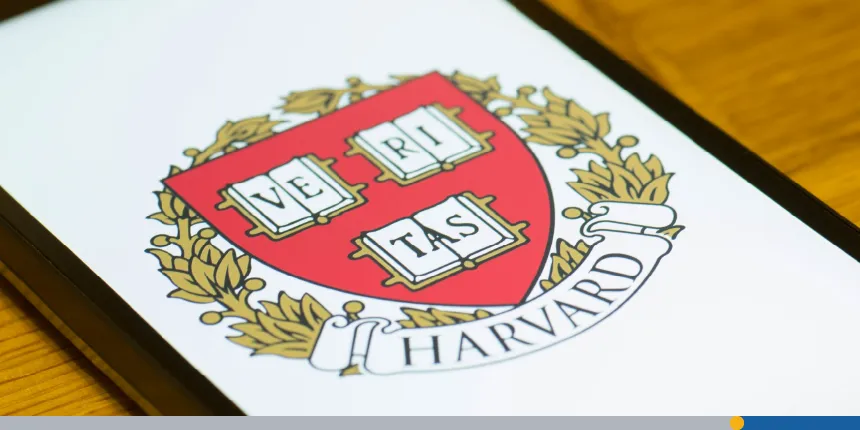
A Logo Steeped in History: The Origins of the Harvard Shield
To understand the Harvard logo, you have to go back, all the way back, to 1636. That’s right, Harvard is the oldest institution of higher learning in America, predating the founding of the federal government by over a century. Harvard University’s main campus is located along the banks of the Charles River in Cambridge, Massachusetts. It’s several miles west of the Boston central business district and has a total enrollment of around 21,278 as of 2023.
The Surprising Story Behind the Famous Harvard Logo
The famous Harvard shield, featuring the Latin motto “Veritas” (meaning “truth”), was only unveiled on the university’s bicentennial in 1836. This is when the shield we know today started appearing on campus buildings. The basis of the Harvard logo was actually lost in the college archives for over a century until Harvard University President Josiah Quincy uncovered it.
On September 8, 1836, it was announced that President Quincy had found the first rough sketch of the Harvard College arms while researching his History of Harvard University in the college archives. Until Quincy’s discovery, the hand-drawn sketch had been filed away and forgotten. It became the basis of the seal officially adopted by the Harvard Corporation in 1843 and remains the basis for the version used today.
The Harvard Logo During World War II
You might be surprised to learn that the Harvard logo played a small but meaningful role during the Second World War. The shield and motto appeared on documents, insignias, and communications as Harvard contributed expertise to the war effort in science, engineering, and policy. During this time, Harvard’s campus transformed with large tents, military training, and an increase in government research partnerships.
The logo served as a reminder of truth, even during times of global uncertainty; a beacon of stability and academic dedication.
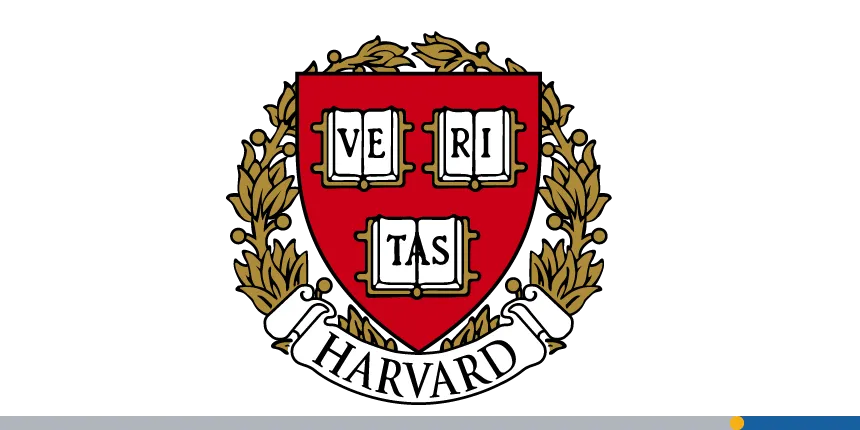
Decoding the Shield: What the Harvard Logo Really Means
While the Harvard logo seems quite simple when compared to other, more decorative and intricate university logos, there is a great deal of depth to the iconic shield. Let’s break down the key elements of the Harvard logo, because every piece tells a story:
1. Three Open Books
The most eye-catching part of the Harvard shield is its trio of open books. These represent the pursuit of knowledge, which is central to Harvard University’s mission. Unlike closed books, open ones symbolize accessibility and intellectual curiosity.
While interpretations vary slightly, the two top open books historically symbolized the Old and New Testaments, reflecting the belief that biblical truth is accessible through scripture. The third book is face-down, representing the limits of human knowledge that require divine revelation.
2. Latin Motto: Veritas
Originally, the shield read “Veritas Christo et Ecclesiae,” which means “Truth for Christ and the Church.” This earlier motto reflected the university’s religious roots and mission. Over time, it was shortened to just “Veritas“, to represent universal truth, transcending religion while honoring its heritage.
3. White Banner & Crimson Background
The Harvard logo features a white banner holding the motto, contrasting beautifully with the rich crimson background, which is Harvard’s official color. This powerful contrast makes the motto and books stand out, reinforcing their symbolic weight.
4. Garamond Typeface
Harvard’s brand guidelines often use the elegant and scholarly Garamond typeface in their printed materials, pairing modern professionalism with timeless class. It’s all part of the school’s distinctive communications strategy.
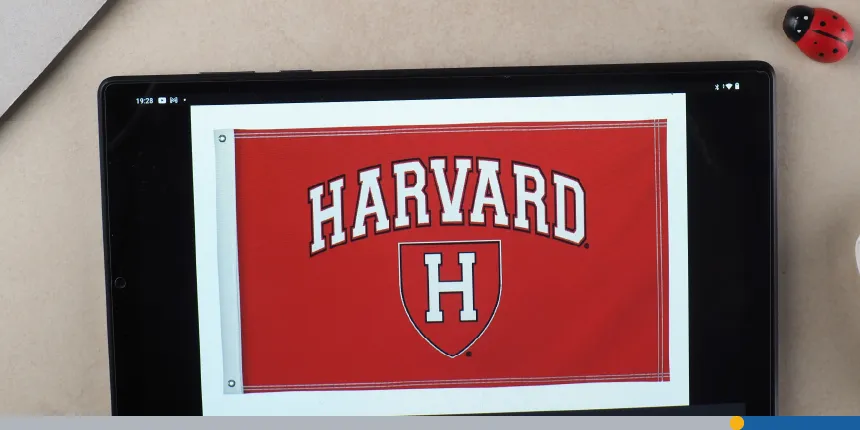
From Seal to Symbol: The Modern Logo’s Journey
Today, the Harvard logo appears across everything from admissions brochures to research reports, from Harvard Business School websites to Harvard Medical School lab coats. Many Harvard schools, such as the Paulson School of Engineering, the Chan School of Public Health, and the Harvard Graduate School of Education, have their own shields that branch off from the core design. Harvard College, the undergraduate college of Harvard University, uses a modified version of the shield with a white banner running between the top and bottom books.
Harvard’s Extended Logo Family
While the main shield is iconic, many sub-schools under the Harvard University umbrella have their own variations of the logo, reflecting their unique missions.
- Harvard Medical School: Harvard Medical School’s history dates back to 1782, when the Harvard Corporation decided to establish a medical department. Since then, the school has been at the forefront of biomedical research. The school incorporates the Harvard shield with the addition of a lion facing left.
- Harvard Business School: Harvard Business School was founded in 1908 as a response to the growing need for formal education in business. The Harvard Business School logo features a distinctive shield design with a black X and five flowers. The overall design conveys a sense of tradition, prestige, and academic excellence, reflecting the institution’s values.
- Chan School of Public Health: The Harvard T.H. Chan School of Public Health features a modified shield with a grey cross and five white fleurs-de-lis, reflecting the school’s global mission and leadership in public health.
Each of these retains the core design symbolizing truth, knowledge, and leadership, while adjusting the visual style to resonate with their academics and researchers.
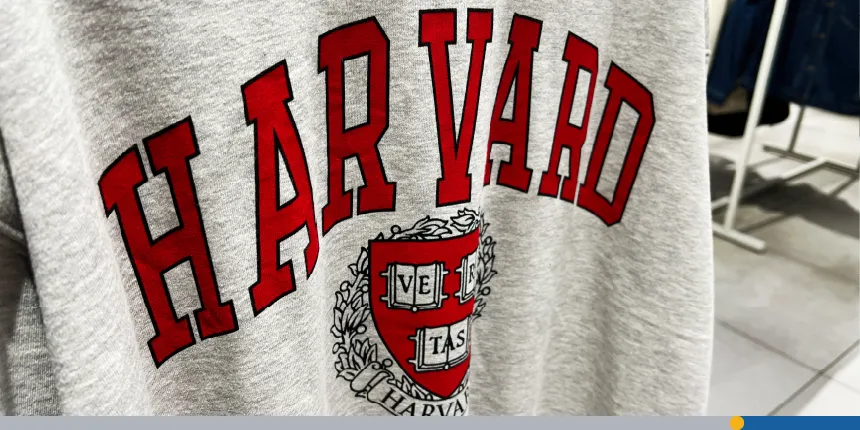
The Role of the Harvard Logo in Branding & Communications
As modern universities compete globally for students, faculty, and funding, branding has never been more important. Harvard’s logo acts as a powerful tool of communication, instantly signaling excellence and prestige. It’s not flashy. It’s not trendy. But it doesn’t need to be. Its long history and understated elegance speak volumes.
In fact, the logo is so respected that Harvard University has tight guidelines for how it can be used. Only official departments and organizations affiliated with Harvard University can use it, and any merchandise featuring the logo must go through an approval process.
The Logo on Campus: More Than Just a Symbol
Spend any time on Harvard’s campus, and you’ll spot the logo everywhere:
- Carved above the entrance of the Memorial Church.
- Embossed into the steps of the Harvard Yard.
- Integrated into stained glass windows at various buildings.
- Printed on banners at commencement ceremonies.
It’s also deeply embedded in traditions, appearing at alumni events, class rings, and even graduate degrees. For students, it becomes part of their identity, linking them to centuries of ideas, research, and the academic community.
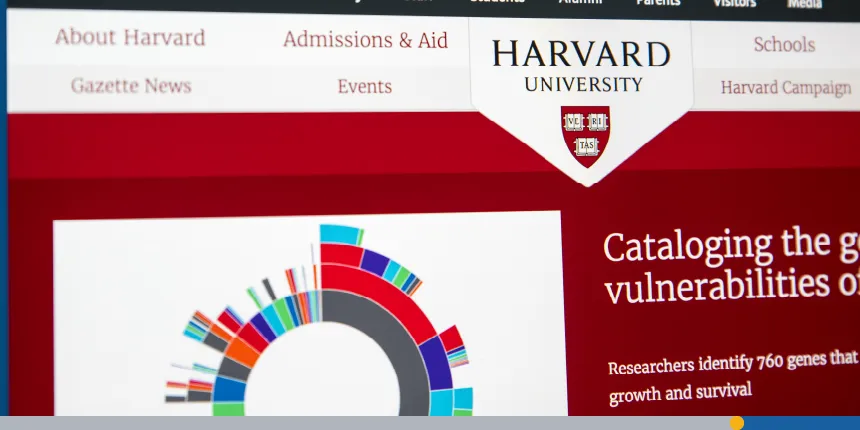
A Modern Twist on Tradition
While Harvard remains proud of its oldest institution status, it’s also looking forward. The university’s visual identity continues to evolve, keeping the traditional Harvard School shield while also adapting to digital platforms and social media.
You’ll find simplified, high-resolution versions of the logo for web use, mobile apps, and even digital diplomas. Even Harvard College and various schools like the design Harvard Graduate School are developing identity systems that are mobile-friendly, all while honoring their shared roots.
How the Harvard Logo Inspires Other Universities
The prestige of the Harvard logo has had ripple effects throughout the world of higher education. Many universities have borrowed from the structure of the shield, the incorporation of Latin mottos, or the use of open books in their own visual branding.
When you see a crest that resembles the Harvard logo, it immediately feels official, scholarly, and timeless. The blend of simplicity, symbolism, and elegance makes it a masterpiece of logo design.
And as Harvard continues to lead in areas like entrepreneurship, science, medicine, and engineering, the logo becomes not just a reminder of where the university came from but where it’s going.

Notable Harvard Alumni: The People Behind the Prestige
The Harvard logo wouldn’t mean much if it weren’t for the students who have made the institution one of the pillars of academic scholarship. The university’s alumni network is a who’s who of leadership, innovation, public service, and entrepreneurship.
Here are just a few of the many legendary figures who’ve earned their degrees under the Veritas banner:
Presidents & Political Leaders
Harvard’s reputation for producing global leaders is no exaggeration. Barack Obama, the 44th President of the United States, earned his law degree from Harvard Law School. Before him, John F. Kennedy graduated from Harvard College, and his legacy lives on through the Kennedy School of Government.
Other notable political alumni include:
- Theodore Roosevelt: 26th US President.
- Al Gore: Former Vice President and environmental activist.
- Ban Ki-moon: Former Secretary-General of the United Nations.
Business & Tech Titans
The Harvard Business School has churned out some of the brightest minds in entrepreneurship and corporate leadership:
- Michael Bloomberg: Founder of Bloomberg L.P. and former NYC mayor
- Sheryl Sandberg: Former COO of Facebook and author of Lean In.
- Steve Ballmer: Former CEO of Microsoft.
- Bill Gates and Mark Zuckerberg: Both famously dropped out of Harvard to build Microsoft and Facebook, but their time on Harvard’s campus played a key role in their entrepreneurial journeys.
Scholars, Scientists & Innovators
Harvard’s deep focus on research, medicine, and the sciences has produced countless award-winning academics:
- Neil deGrasse Tyson: Astrophysicist and science communicator.
- Steven Pinker: Renowned professor and cognitive psychologist.
- E.O. Wilson: Biologist known for his work on biodiversity
Artists, Writers & Cultural Icons
Harvard alumni have made significant marks in the arts as well:
- Natalie Portman: Oscar-winning actress and Harvard psychology alum.
- Tommy Lee Jones: Acclaimed actor and former Harvard roommate of Al Gore.
- T.S. Eliot: Nobel Prize-winning poet.
From Nobel laureates to Pulitzer Prize winners, the reach of Harvard’s education and community of thinkers spans every domain.
A Global Network
One of the most powerful aspects of being a Harvard alum is the access to a global community of movers, shakers, and thinkers. Whether you’re involved in public health, communications, law, or advanced study, Harvard alumni are leading in every sector imaginable.
Conclusion
The Harvard logo is a mark of excellence. Whether you’re admiring it as an alum, dreaming of admissions, or simply appreciating great logo design, one thing’s for sure: the iconic shield holds its place as the best prestige university logo in the world.
Want to create something that stands the test of time like the Harvard logo? FreeLogoServices‘ AI-powered logo maker can help you design a standout logo in just minutes. Get started today!
FREQUENTLY ASKED QUESTIONS
What does the Harvard logo mean?
The Harvard logo, featuring three open books and the Latin word “Veritas” (meaning truth), symbolizes the university’s commitment to learning, knowledge, and academic excellence. The Harvard logo was first officially used in 1836.
Why are there three books on the Harvard logo?
The three books represent a pursuit of truth through education, with some interpretations linking them to past, present, and future knowledge or different domains of learning.
What is the full Latin motto on the Harvard logo?
Originally, the motto was “Veritas Christo et Ecclesiae”, meaning “Truth for Christ and the Church.” Over time, it was shortened to just “Veritas.”
Can anyone use the Harvard logo?
No. Harvard maintains strict usage guidelines. Only officially recognized departments and licensed vendors can use the Harvard logo, especially for merchandise or communications.
What font does Harvard use?
Harvard’s official typography includes Garamond, a classic serif font that complements its scholarly brand and heritage. Different Harvard schools use slightly different font designs.
Does every Harvard school have its own logo?
Yes. While all schools share the core design of the shield, departments like Harvard Medical School, Chan School, Harvard Business School, and the Paulson School have their own customized versions.
Where can I see the Harvard logo in person?
You’ll spot it throughout Harvard Yard, on buildings like the Memorial Church and Widener Library, at events, and in Harvard branding throughout campus.
Who created the original Harvard shield?
The earliest known sketch of the Harvard shield was made by President Josiah Quincy in 1836, based on earlier historical sources.
Why is Harvard’s color crimson?
Crimson became the official color of Harvard University in the late 1800s, chosen by students and used consistently in branding, sports, and the university’s communications.
How does the Harvard logo influence its reputation?
The logo reinforces Harvard’s identity as a global leader in education, academics, sciences, research, arts, business, and leadership, giving it both historical gravitas and modern relevance.
Where is Harvard?
The school is located at Massachusetts Hall, Cambridge, MA 02138, United States.






